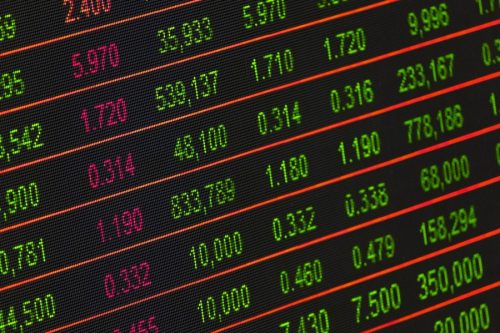After Super Tuesday last week showed former vice president Joe Biden resurrecting his campaign and halting Bernie Sander’s progress, this Tuesday sees a flurry of state primaries and caucuses with Idaho, Michigan, Mississippi, Missouri, North Dakota and Washington among those being contested. The week in total has 371 pledged delegates up for grabs.
On the data front, fourth-quarter (Q4) gross domestic product (GDP) second estimates come from the eurozone on the Tuesday and the day after sees UK data on January GDP. The former is likely to confirm that European growth stagnated at 0.1%, three times less than Q3 growth. In the latter, the focus will likely be on whether a post-election bounce was evident in output after flat growth in the previous quarter.
Evidence of a post-election bounce in the UK economy has been seen clearly in the housing sector, with mortgage approvals rising to an almost four-year high in January. The February Royal Institute of Chartered Surveyors housing survey data on Thursday will provide more evidence on the state of the sector.
However, taking centre stage on Thursday is the European Central Bank March meeting, with President Christine Lagarde facing a dilemma in light of the ongoing Covid-19 outbreak between following the Federal Reserve’s unexpected 50 basis point cut and lowering already negative interest rates or providing further quantitative easing/measures focused on providing short term liquidity to struggling firms.
Investors have been contemplating if the disruption to output on the supply-side from the coronavirus is offsetting weak demand and creating inflationary pressures. February inflation data from China, on Tuesday, the US, on Wednesday, and the eurozone on Friday will give a clearer insight into which effect is stronger.
The almighty dollar
The US dollar (USD) has performed strongly across the board this year, breaching levels last seen in October in recent weeks. Driving USD strength has been robust economic growth, safe-haven flows amid previous Iran tensions, the Covid-19 epidemic and the dollar’s attractive yield relative to other currencies in the ten largest economies, or the G10.
Most market participants envisioned a weaker USD in 2020 and so the recent outperformance would have come as a surprise. Whilst the fundamentals of the US economy appear healthy and would suggest that the recent move has legs, we highlight that the 2020 elections and the uncertainty that comes with this could provide some volatility.
That said, the US Federal Reserve’s surprise 50 basis point rate cut on 3rd March may limit the attractiveness of the dollar.
For more information contact Barclays Private Bank in Monaco by clicking here or on +377 93 15 35 35
